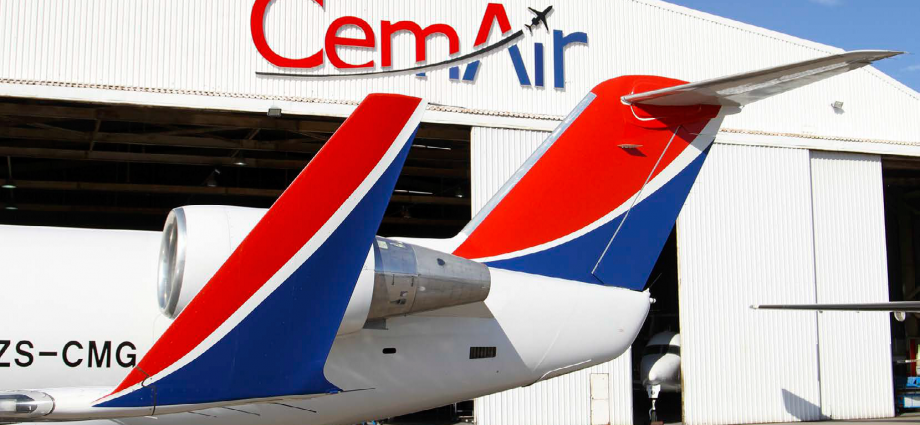CemAir is an airline that epitomises the resilience of the private sector under the immense pressures of the Covid-19 crisis. Guy Leitch spoke to Laura Van der Molen about how their airline survived Covid-19, and its growth plans for the recovery.
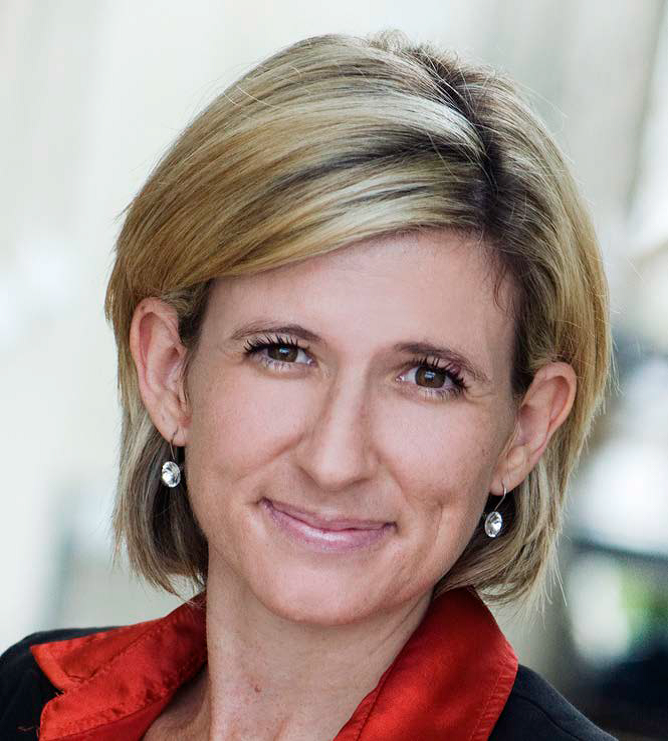
CemAir CFO Laura Van der Molen 
Guy Leitch
A FEATURE OF THE AIRLINE that is probably unique anywhere in the world is that it is run by a husband and wife team of Miles and Laura Van der Molen. Laura is a former medical doctor who moved into corporate finance and then met and married Miles at business school. Laura is the Chief Financial Officer and accountable manager of the AMO of CemAir and together they make a formidable team, although Laura is often happier in public to take a back seat to Miles.
CemAir is gearing up for a post Covid-19 boom. One of the bigger changes it is making is to freshen up the livery of its fleet which up to now had been kept deliberately plain as the aircraft were also used for ACMI ‘wet’ leases.
After an inclusive participative process with the airline’s staff, a new livery has been decided upon. They are moving fast – the first four aircraft have already been painted with the blue and red on white colour scheme. Reflecting the commitment of the airline to its new branding, the new livery is being painted on, and does not use decals.
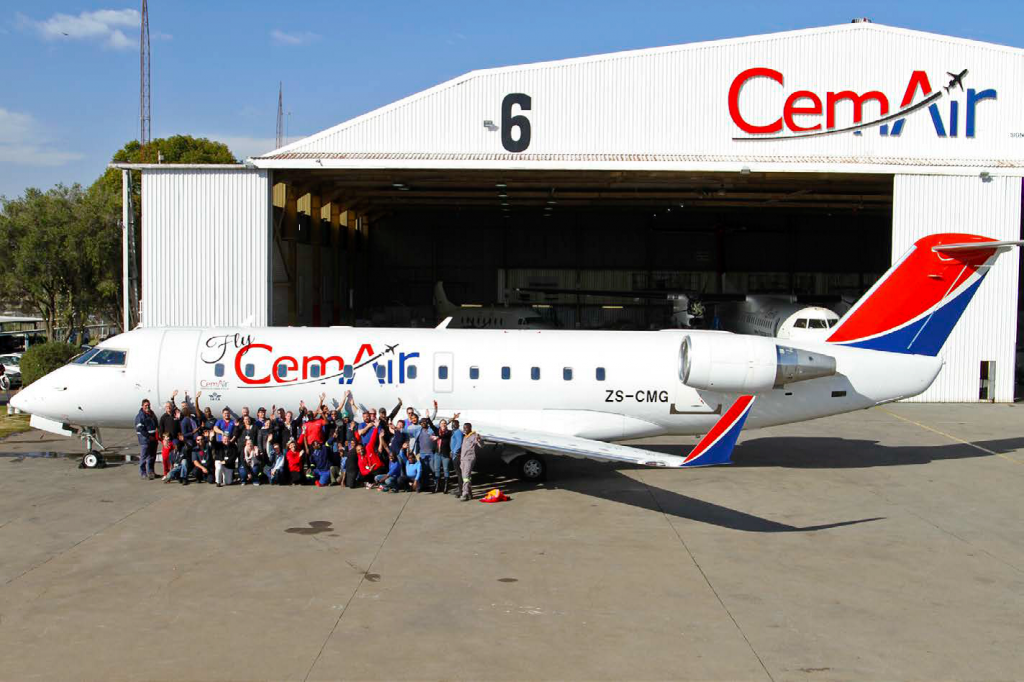
The CemAir fleet currently consists of three types: The pure jet fleet consists of eight Bombardier CRJ 100/200 LRs, plus a -900. The turboprop fleet consists of: two Dash-8 Q400s, two Dash-8 Q300s, a Q100 plus seven Beech 1900Ds.
When asked about passenger acceptance of turboprops, Van der Molen says, “It’s true that the turboprops are a harder sell as passengers prefer pure jets. It would appear that passengers think that turboprops are old and small. However, they perform an invaluable function within our fleet and in particular, to serve our network of unique destinations, as we are able to get a 50-seat Q300 into 1200 metre runways such as Plettenberg Bay.”
‘how their airline survived Covid-19’
Van der Molen explains that the airline is aggressively looking at the gaps in the regional airline market created by the demise of SA Express, and is focussed on optimising the use of smaller gauge aircraft. This has however not prevented them from taking on the low cost carriers who operate 186 seat Boeing 737- 800s. CemAir has therefore entered the intensely competitive Johannesburg – Cape Town and Durban ‘golden triangle’ market. However, she says that they are only providing seats at peak times, such as Friday and Sunday afternoons and Monday mornings. She notes that the Bombardier CRJ900 is a particularly popular option with its 31-inch seat pitch and thus better leg room than some of its competitors.
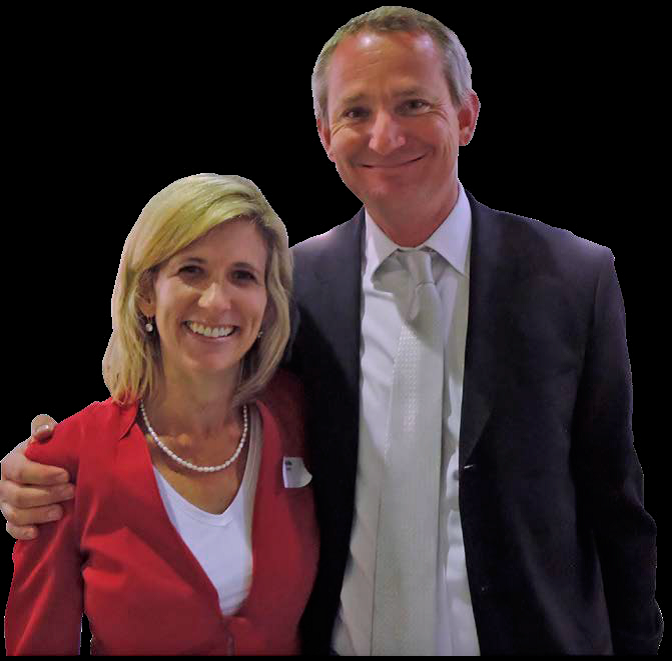
Despite CemAir’s aggressive positioning for post-Covid growth, Van der Molen says that the recovery from the Covid-19 lockdown has not been straightforward. Notably, she says that there has been another drop off in demand from passengers in May with the arrival of a Covid third wave.
How did the airline manage to survive the Covid-19 crisis? “We were fortunate in that we were able to successfully bid to handle more than 2000 repatriations from places as far as Iraq. A key advantage was our charter experience in that we had aircraft of a small enough gauge to cost effectively handle the specialised loads and destinations. Social media performed a key function in alerting people to these flights. We were therefore able to work with many NGOs. And I must add that the South African Department of International Relations and Cooperation (DIRCO) was extremely useful in terms of their ability to assist with arrangements for the necessary overflight clearances and customs and immigration formalities.
“Arranging these repatriation flights was very work intensive and so kept us busy. And most usefully, it kept our AMO working and our pilot proficiency up. In addition, our worldwide charter operation has been very strong and is continuing to pick up. However, we were not able to do much in the way of cargo flying, as our aircraft are not specifically configured for cargo operations,” she says.
‘provides essential air connectivity to the smaller towns’
One of CemAir’s strengths is that it provides essential air connectivity to the smaller towns on the coastal routes, particularly from Johannesburg to Margate, Plettenberg Bay and George. By using their smaller gauge aircraft, CemAir has been able to link these towns for thin routes such as Cape Town to George and Plettenberg Bay.
Van der Molen notes that there has been a steady move of people away from the cities to the coastal towns and that this helped underpin the CemAir route network. She agrees with IATA that there is already a pent-up demand for travel, particularly to take advantage of the current special offer prices on accommodation. She is looking forward to the return of international tourists. She says that they are already seeing positive signs in their passenger numbers, especially in tourists from the UK and Europe, although not much is coming from the USA and Canada yet.
To continue to feed and de-feed their routes CemAir has taken the opportunity to develop interline partnership arrangements with a number of other airlines, most notably Ethiopian, Qatar, Proflight (in Zambia) Emirates and LAM (in Mozambique). However, the Emirates interline agreement has not yet yielded the fruit it was hoped for, as Emirates is currently not flying to South Africa.
As an IATA member CemAir is currently renewing its IOSA certification and this audit has stood it in good stead to satisfy the interline partners on internal quality controls. However, she points out that for any airline, even a basic interline agreement can be expensive in terms of updating airline booking systems and the Global Distribution System (GDS), which can cost as much as $10,000. Fortunately booking time on the GDS for testing and implementation of interlining has not been a challenge due to the current low volumes of travellers.
Van der Molen says that they are looking to expand their regional route network. The airline therefore has a number of applications submitted to the South African International Air Services Licencing Council. She reports that CemAir has already been awarded the Johannesburg – Luanda route, which they are sharing with TAAG, and JHB – Lagos, as well as JHB-Maputo, JHB-Lusaka and JHB -Ndola. Even though the bilateral air service agreements are already in place, actually getting the approvals from other countries to start flying can take up to four years. A case in point are the Cape Town – Gaborone, JHB-Gaborone, JHB-Maun and JHB-Kasane routes as the Botswana government has been particularly determined to protect its local airline.
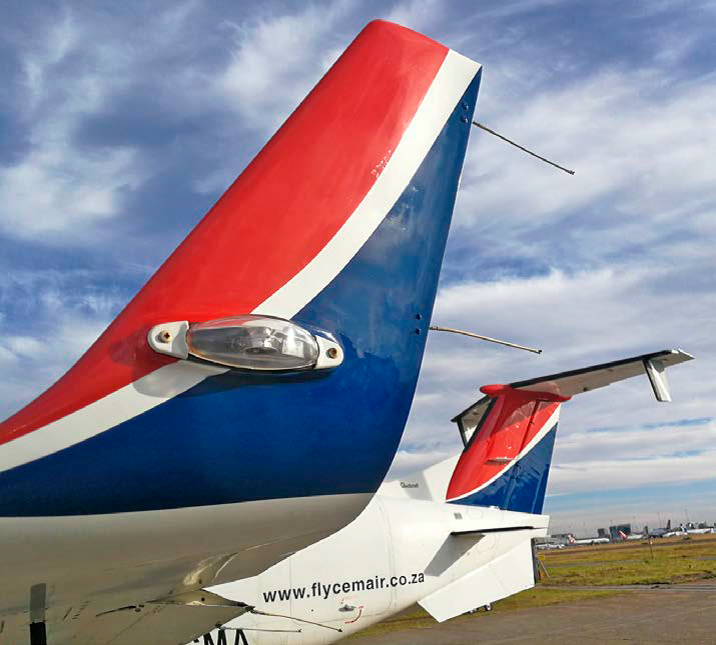
The length of the Johannesburg-Lagos sector will require a significant fleet upgrade. Van der Molen confirms that they have been looking at either Airbus A320s or Boeing 737-800s. However, this will entail a gearing-up by the airline in terms of its maintenance capacity and pilot training. She points out that one of the core values of the airline is that it does its own maintenance and a move to Boeing or Airbus products would require an upgrade to its AMO in terms of skills and tooling.
Van der Molen makes the interesting observation that, due to the decline in SAA Technical with its associated loss of skills, there has been a steady need for CemAir and other SAAT customers to build their own MRO capability for key components and services.
Just a few years ago CemAir was engaged in a bruising battle with the South African CAA. Van der Molen says that the airline’s relationship with the regulator has now stabilised. She notes that one of the key challenges faced by the CAA is that it has lost many of its key skills and expertise, some to Covid-19. Van der Molen describes the current relationship as one of professional courtesy. She says there is now a clear understanding between the Regulator and the airline that they are both committed to providing essential air connectivity that will grow the South African economy.

